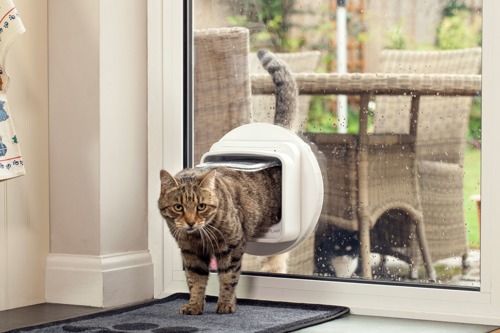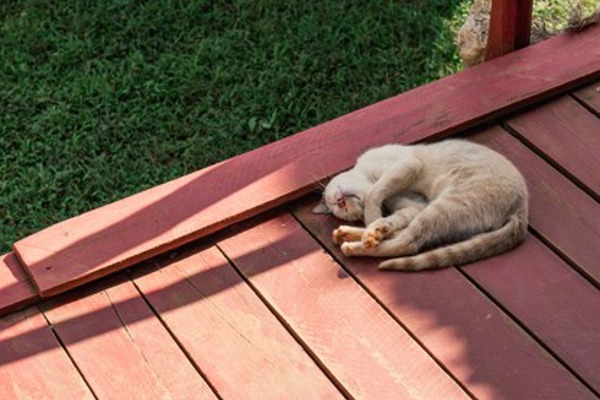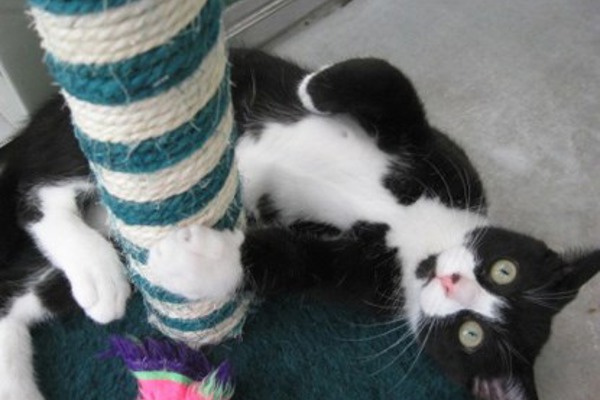Read our simple step-by-step instructions on how to train your cat to use their litter tray, the cat flap and a cat carrier.
While training your cat to do tricks can provide them with valuable mental stimulation and impress your friends, it’s best to start by teaching them some essential life skills before you tackle the tricky stuff. Here’s some advice on how to get your cat used to the litter tray, cat flap and the dreaded cat carrier!
Toilet training
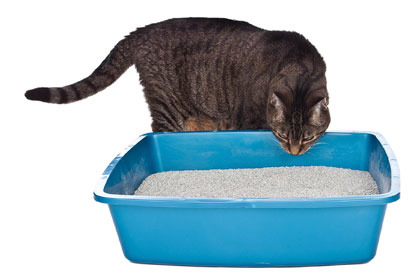
You may wonder how best to house-train a cat, but the reality is that usually there is no need. If they are provided with an appropriate litter tray as a kitten, they will naturally follow their mother’s lead in using the tray as they grow up. Therefore, whether you are buying a kitten or rescuing one, ensure that they have had access to an appropriate litter tray for the first eight weeks of their life.
Often the litter substrate a cat uses as a kitten is the type they will prefer throughout their life. Make sure you ask the rescue centre or breeder which type your new cat prefers and use that to begin with. If you do decide that you want to change to a different litter, do this gradually over time so the cat can get used to it. If your cat is not using the litter tray, try changing the substrate to fine play sand or soil as these more closely mimic what cats would naturally like to toilet in.
Other toileting tips for your cat:
- the ideal litter tray needs to be big enough for the cat to turn around in and contain litter approximately 3cm in depth so they can bury their waste
- place the litter tray in a private, quiet location. Cats will be far less likely to use a litter tray in a busy area or, for example, one placed directly in front of a noisy washing machine!
- cats are very clean creatures, so their litter tray needs to be cleaned out at least once a day
- if there is more than one cat in the household, ensure that there is at least one litter tray per cat
Don’t get in a flap
Another important life skill for your cat to learn is using a cat flap, if you have one installed in your home. Here are some simple steps you can follow to help them learn how to come and go as they please.
- Prop open the cat flap and let your cat explore around it. It will help if you have something super exciting for them on the other side of the flap, such as a person they really like or a tasty treat.
- Give your cat space to access the cat flap on their own and once they have gone through it a couple of times, lower the height of the flap slightly.
- As they get more confident, gradually lower the flap some more.
- Repeat until the flap is no longer propped open at all and your cat is happy to go in and out with no incentive.
If your cat is particularly nervous, it may take some more time. Be patient and do not get frustrated. If they do not like going through small spaces or things going over their head, start them off with something easier. For example, place a large box that is open at both ends in an open doorway and reward your cat for exploring and walking through it. Once they are confident walking through this larger space, they may be ready to tackle something a little smaller like a cat flap. Sessions with the cat flap need only be a few minutes long and your cat will normally pick it up in a few days.
If you’re in search of a cat flap for your feline friend, our partners at Sure Petcare have a range of award-winning microchip cat flaps to choose from. What’s more, Sure Petcare offer a 10% discount on their products to Cats Protection supporters and donate 10% of each supporter purchase to Cats Protection! Learn more about Sure Petcare’s products and how to receive your discount.
Getting carried away
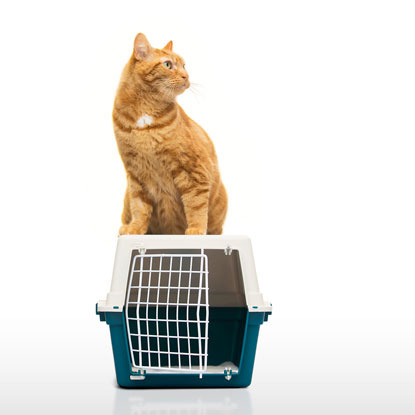
To prevent future vet visits from becoming a wrestling match between you and your moggy, it’s a good idea to get them used to the cat carrier as early as possible. You never know when you may need to use it, so follow these steps for stress-free cat travel.
- Leave the carrier out in a quiet place that your cat is likely to visit and put one of your cat’s blankets inside so that it smells familiar. If your cat is particularly tentative around the carrier, try to make it as open and uncovered as possible. Don’t put pressure on your cat to go in straight away.
- After they have explored the carrier a number of times, try putting a tasty treat in the entrance to it. If the cat is scared, you may want to put the treat outside the front of the carrier and then leave them to find it on their own.
- Once your cat is comfortable taking a small treat from the carrier, start feeding small parts of their meal inside the carrier, building up the time they voluntarily spend inside it.
- Next, start gradually closing the door of the carrier while your cat is voluntarily inside. Only shut it for a few seconds at a time initially and then build this up over time. Do this until you can close the door on the cat carrier and your cat remains calm inside. If your cat panics and rushes out you have gone too fast and will need to go back a step.
- If your cat continues to be nervous of the carrier or suspicious of humans near the carrier, gradually start draping a blanket over the entrance so they have to brush past it to get the food. Continue this until the blanket covers all of the entrance but your cat can still creep in. This will help to get them used to being enclosed in a more gradual way.
- When your cat is confident being enclosed in the carrier and picked up then you just need to get the carrier out every now and again with a tasty treat or favourite toy in it to maintain the positive association.
This whole process will only take a few minutes of your time over the course of a couple of days. At each stage reward your cat with food or praise for remaining calm.
Remember, any form of training should be relaxed for both you and your cat so if you are getting frustrated that your feline isn’t grasping it quick enough, simply take a break and try again later.
Our video below has some useful techniques for getting your cat inside your cat carrier in a safe and calm manner.
If you have any problems training your cat, take a look at our advice on the Cats Protection website or contact a qualified behaviourist.

